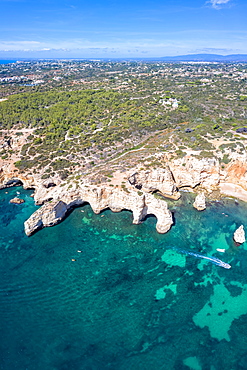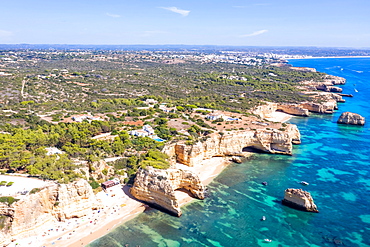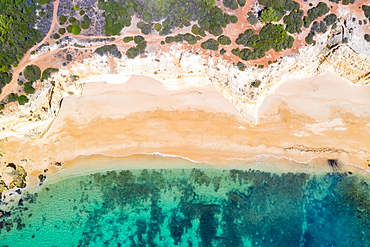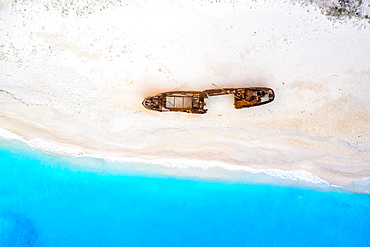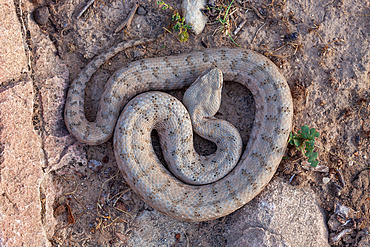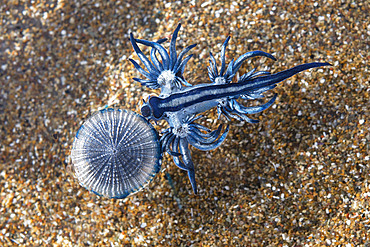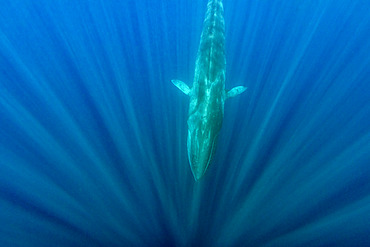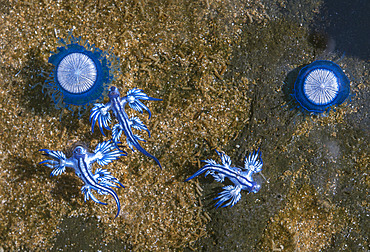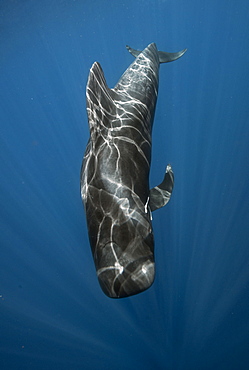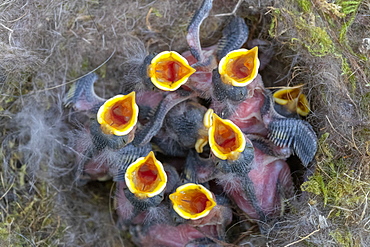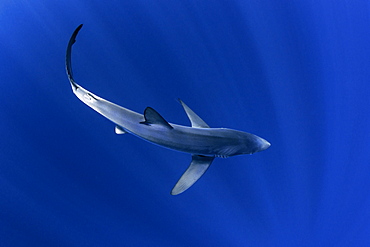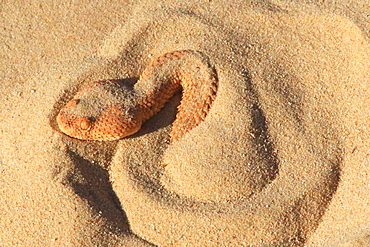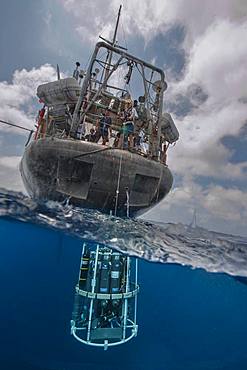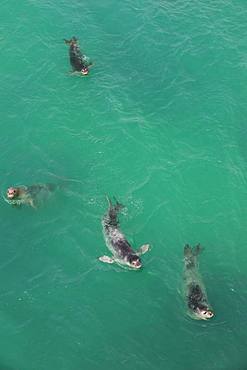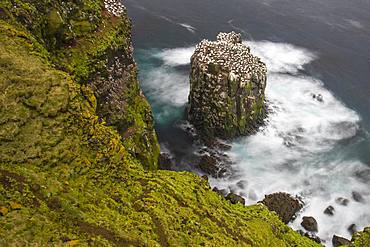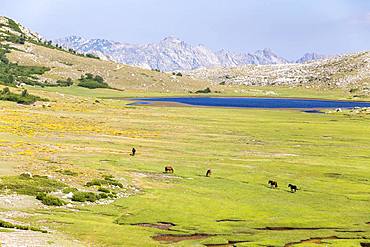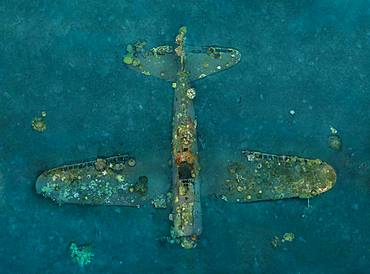Recent searches
Loading...
832-394774 - Drone shot, view over the Five Finger Bay of Portals Vells, Majorca, Balearic Islands, Spain, Europe
832-394846 - Portugal Algarve beach Praia da Marinha sea ocean drone shot from above in Praia da Marinha, Portugal, Europe
832-394849 - Portugal Algarve beach Praia da Marinha sea ocean drone shot from above in Praia da Marinha, Portugal, Europe
832-394871 - Drone shot, curve in autumnal forest, Roter Berg, L485, between Diekholzen and Sibbesse, in the background Diekholzen, district of Hildesheim, Lower Saxony, Germany, Europe
832-394854 - Portugal Algarve beach Praia da Marinha sea ocean drone shot from above in Praia da Marinha, Portugal, Europe
832-394689 - Beach shipwreck Navagio Beach drone shot bird's eye view in Zakynthos, Greece, Europe
832-394079 - Takamaka Beach with Palm Trees Sea Ocean Drone Shot in Mahe, Seychelles, Africa
832-394084 - Takamaka Beach with Palm Trees Sea Ocean Drone Shot in Mahe, Seychelles, Africa
832-394089 - Beach shipwreck Navagio Beach drone shot bird's eye view in Zakynthos, Greece, Europe
832-394077 - Beach shipwreck Navagio Beach drone shot bird's eye view in Zakynthos, Greece, Europe
1113-106060 - A young Malaysian boy looking into the camear from his turqoise boat, shot from above in Borneo, malaysia.
1113-106061 - A man folding out a giant American flag. Shot in Texas, USA.
1113-105722 - Two women floating on rubber floats in a clear blue ocean. Shot from the air. British Virgin Islands.
860-290374 - France. Hunting. Lead balls. The European commission has adopted in january 2021 a ban on using lead 100m around any wetland in Europe. So far in France, the ban is only 30m. In the future, the lead will be totally banned as 6000 tons of lead is put into nature by hunters every year. There is already new anmunitions with zinc, steel, tungsten and bismuth.
860-290110 - Panoramic landscape of Vaeroy Island south of Lofoten, Norway
860-290417 - Bottlenose dolphins (Tursiops truncatus) Pelagos Sanctuary for Mediterranean Marine Mammals, France, Mediterranean Sea
860-289962 - Blue Dragon (Glaucus atlanticus). Small slug that measures only about 2 cm and is generally associated with the Portuguese man of war (Physalia physalis), although it also usually appears in intertidal pools. Marine invertebrates of the Canary Islands, Tenerife.
860-290302 - Cap Blanc-nez under the snow in winter, Opal Coast, France
860-289928 - Transhumance of Herens cows, Val de Nandaz, Valais, Switzerland
860-289941 - Frame installed in a centrifuge, around Cluny, France
860-289929 - Transhumance of Herens cows, Val de Nandaz, Valais, Switzerland
860-289790 - West-Asian blunt-nosed viper (Macrovipera lebetina obtusa), Iran
860-290420 - Fin whale (Balaenoptera physalus) is the largest baleen whale found in the Mediterranean Sea. It is the world?s second largest cetacean, after the blue whale. Pelagos Sanctuary for Mediterranean Marine Mammals, Mediterranean Sea
860-289869 - Loggerhead turtle (Caretta caretta) accompanied by pilotfish (Naucrates ductor) swimming near the surface. Santa Maria Island, Azores, Portugal, Atlantic Ocean
860-290260 - BLUE DRAGON (Glaucus atlanticus). Small slug that measures only about 2 cm and is generally associated with the Portuguese man of war (Physalia physalis), although it also usually appears in intertidal pools. Marine invertebrates of the Canary Islands, Tenerife.
860-290301 - Cap Blanc-nez in winter, Opal Coast, France
860-290419 - Fin whale (Balaenoptera physalus) is the largest baleen whale found in the Mediterranean Sea. It is the world?s second largest cetacean, after the blue whale. Pelagos Sanctuary for Mediterranean Marine Mammals, Mediterranean Sea
860-289930 - Transhumance of Herens cows, Val de Nandaz, Valais, Switzerland
860-289963 - Blue Dragon (Glaucus atlanticus) hanging. Small slug that measures only about 2 cm and is generally associated with the Portuguese man of war (Physalia physalis), although it also usually appears in intertidal pools. Marine invertebrates of the Canary Islands, Tenerife.
860-290259 - BLUE DRAGON (Glaucus atlanticus). A small peacic slug that measures only about 2 cm and is generally associated with the Portuguese frigatebird (Physalia physalis) or the blue button (Porpita porpita) on which it feeds. They can also appear in intertidal pools. Marine invertebrates of the Canary Islands, Tenerife.
832-393279 - Boats and boathouses in the harbour from above, Seehausen am Staffelsee, morning light in autumn, drone shot, alpine foreland, Upper Bavaria, Bavaria, Germany, Europe
832-393168 - Drone shot, panorama, Mondseeland, Mondsee, Salzkammergut, Upper Austria, Austria, Europe
832-393193 - Drone shot, Thalgau, Flachgau, Land Salzburg, Austria, Europe
832-393169 - Drone shot, Fuschlsee with Fuschl Castle, Salzkammergut, Land Salzburg, Austria, Europe
832-393276 - Seehausen am Staffelsee, sunrise in autumn, drone shot, alpine foothills, Upper Bavaria, Bavaria, Germany, Europe
832-393275 - Camping island Buchau, Staffelsee, morning light in autumn, drone shot, alpine foothills, Upper Bavaria, Bavaria, Germany, Europe
832-393278 - Rowing boats in the harbour from above, Seehausen am Staffelsee, morning light in autumn, drone shot, alpine foreland, Upper Bavaria, Bavaria, Germany, Europe
832-393277 - Peninsula Lindenbichl, Staffelsee, morning light in autumn, drone shot, alpine foothills, Upper Bavaria, Bavaria, Germany, Europe
860-289249 - Coloring quail eggs with natural dyes for Easter, spring
860-289037 - Mongolian horsemen lead a troop of horses running in a meadow covered by snow, Bashang Grassland, Zhangjiakou, Hebei Province, Inner Mongolia, China
860-289251 - Coloring quail eggs with natural dyes for Easter, spring
860-288783 - Aerial view of a Bowhead whale, (Balaena mysticetus), also known as Greenland right whales, can weigh from 75 to 100 tonnes, swimming in the shallow waters in Vrangel Bay of the Sea of Okhotsk, eastern Russia.
860-289252 - Coloring quail eggs with natural dyes for Easter, spring
860-288818 - Waterfalls on the Urederra river in autumn, Navarra, Spain
860-288845 - Blue shark (Prionace glauca) and Pilot fish (Naucrates ductor), Pico Island, Azores, Portugal, Atlantic Ocean
860-289068 - Fescue (Festuca glauca) 'Intense blue'
860-289056 - Fog at dusk in the morning over the Arve valley. Air and light pollution in the Arve valley. Shooting from Mont M?le, Haute-Savoie, France
860-289038 - Mongolian horsemen lead a troop of horses running in a meadow covered by snow, Bashang Grassland, Zhangjiakou, Hebei Province, Inner Mongolia, China
860-289250 - Coloring quail eggs with natural dyes for Easter, spring
860-289253 - Coloring quail eggs with natural dyes for Easter, spring
860-288784 - Aerial view of a Bowhead whale, (Balaena mysticetus), also known as Greenland right whales, can weigh from 75 to 100 tonnes, swimming in the shallow waters in Vrangel Bay of the Sea of Okhotsk, eastern Russia.
860-289188 - Harvest of green beans in a plastic crate in summer
860-289060 - Snowfall above La Clusaz. Winter scene in Haute-Savoie, France
860-289189 - Girl harvesting green beans in a kitchen garden in summer
746-89455 - Panoramic aerial view of Lisbon skyline, Portugal.
746-89501 - Aerial view of North Miami Beach skyscrapers with sun and clouds.
746-89483 - Panoramic aerial view of Pont Naturel in Mauritius. This is a natural bridge over the water.
746-89467 - Ile Aux Cerfs, Mauritius. Aerial view of beautiful coastline.
746-89505 - Aerial view of South Beach skyline in Miami, Florida.
746-89385 - Statue of Liberty on Liberty Island and Ferry Boat with tourists, New York City.
746-89427 - Panoramic aerial view of Lisbon skyline and Commerce Square at dusk, Portugal.
746-89370 - Overhead panoramic view of beautiful tropical beach with trees and swimmers.
746-89368 - Panoramic aerial view of Budapest Citadel and city skyline at dusk, Hungary.
746-89425 - Statue of Liberty on Liberty Island and Ferry Boat with tourists, New York City.
746-89413 - Panoramic aerial view of Downtown Miami and Brickell Key at sunrise.
746-89454 - Aerial panoramic view of Zion National Park, Utah
746-89369 - Huka Falls, New Zealand. Panoramic aerial view of beautiful waterfalls and countryside at sunset.
860-288119 - Lesser cerastes Vipera (Cerastes vipera) on sand, Mauritania
860-287972 - Shoal of Graybar Grunt (Haemulon sexfasciatum), Cabo Pulmo Marine National Park, Baja California Sur, Mexico
860-288542 - Green Turtle (Chelonia mydas) and diver, Tenerife, Canary Islands, Spain, Atlantic Ocean
860-288506 - View on Lake Wakatipu with city of Queenstown, South Island, New Zealand
860-287899 - Pod of short-finned pilot whales, (Globicephala macrorhynchus), Dominica, Caribbean Sea, Atlantic Ocean.
860-287954 - Cheetahs (Acinonyx jubatus), eating, Private reserve, South Africa
860-288456 - A clifftop view of a bird colony off the coast of Northumberland, UK.
860-288120 - Lesser cerastes Vipera (Cerastes vipera) on sand, Mauritania
860-288146 - Hamlet of Bonnefin above Besse en Oisans in winter, Oisans Valley, Hautes Alpes, Francece hameau permettait d'enmontagner au printemps et d'exploiter les cultures de seigle et d'orge sur les terrasses encore bien visibles.
860-287904 - Pod of sperm whale socializing, (Physeter macrocephalus), Vulnerable (IUCN), The sperm whale is the largest of the toothed whales. Sperm whales are known to dive as deep as 1,000 meters in search of squid to eat. Image has been shot in Dominica, Caribbean Sea, Atlantic Ocean. Photo taken under permit n°RP 16-02/32 FIS-5.
860-288234 - Blue shark (Prionace glauca). North Atlantic Ocean, Canary Islands.
860-288301 - Fly fishing on the Loue river, Presentation of a wild trout (Salmo trutta fario), Franche-Comté, France
860-288533 - Short-finned pilot Whale (Globicephala macrorhynchus), Tenerife, Canary Islands, Spain, Atlantic Ocean
860-288534 - Short-finned pilot Whale (Globicephala macrorhynchus), Tenerife, Canary Islands, Spain, Atlantic Ocean
860-288538 - Roughtail Stringray (Dasyatis centroura),Tenerife, Canary Islands, Spain, Atlantic Ocean
860-288427 - Eurasian blue tit (Cyanistes caeruleus[), nest with chicks, Alsace, France
860-288197 - Blue shark (Prionace glauca). North Atlantic Ocean, Canary Islands.
860-288122 - Lesser cerastes Vipera (Cerastes vipera) on sand, Mauritania
860-288121 - Lesser cerastes Vipera (Cerastes vipera) in sand, Mauritania
860-287909 - Pod of sperm whale relaxing after a short sleep (Physeter macrocephalus) Researchers first saw this unusual sleep behavior in sperm whales in 2008. The scientists in that study found that sperm whales dozed in this upright drifting posture for about 10 to 15 minutes at a time, Vulnerable (IUCN). The sperm whale is the largest of the toothed whales. Sperm whales are known to dive as deep as 1,000 meters in search of squid to eat. Dominica, Caribbean Sea, Atlantic Ocean. Photo taken under permit n°RP 16-02/32 FIS-5.
860-287906 - Pod of Sleeping sperm whale (Physeter macrocephalus) Researchers first saw this unusual sleep behavior in sperm whales in 2008. The scientists in that study found that sperm whales dozed in this upright drifting posture for about 10 to 15 minutes at a time, Vulnerable (IUCN). The sperm whale is the largest of the toothed whales. Sperm whales are known to dive as deep as 1,000 meters in search of squid to eat. Dominica, Caribbean Sea, Atlantic Ocean. Photo taken under permit n°RP 16-02/32 FIS-5.
860-287806 - Bott's Bright-eyed Frog (Boophis bottae), Andasibe, Périnet, Région Alaotra-Mangoro, Madagascar
860-287675 - Hippopotamus (Hippopotamus amphibius), troupe in the Mara River, Masai-Mara Reserve, Kenya
860-287544 - Hiker on the suspended footbridge of Spasimata on the GR 20, Cirque de Bonifatu, Corsica Regional Nature Park, Balagne, Corse-du-Sud, France
860-287686 - Monk Seal (Monachus monachus) group swimming, Noadibou, Mauritania
860-287452 - Tara Oceans Expeditions - May 2011. CTD-Rosette (Conductivity Temperature Density instrumental platform with 7 additional sensors)
860-287685 - Monk Seal (Monachus monachus) group swimming, Nouadhibou, Mauritania
860-287541 - Lake Nino (1760m), horses grazing the grass around the pozzines (small pond of water surrounded by grassy lawns), stage on the GR 20 between the refuge of Manganu and the Col de Verghio or Castellu di Vergio, Haute-Corse, La France
860-287721 - Northern Gannet (Morus bassanus), colony on Stóri Karl islet, Iceland
860-287694 - Centralian Blue-Tongued Skink (Tiliqua multifasciata, Mount Conner Red Center, NT, Australia
860-287540 - Lake Nino (1760m) stage on the GR 20 between the refuge of Manganu and the Col de Verghio or Castellu di Vergio, horses grazing the grass around the pozzines (small pools of water surrounded by grassy lawns), Haute-Corse, France
860-287600 - Black-headed Bunting (Emberiza melanocephala) eggs in nest, Armenia
860-287440 - Tara Pacific expedition - november 2017 Zero wreck, vertical view Orthomosaic from 3D photogrammetry (13500 x 10000 px). D: 15 m Kimbe Bay, papua New Guinea, Coral growth on this wreck is from a period of 74 years ! The ZERO, is a Japanese WW2 fighter plane wreck. This Zero wreck was discovered in January 2000 by local William Nuli while he was freediving for sea cucumbers. He asked the Walindi Plantation Resort dive team if they might know what it was, and when they investigated they uncovered the intact wreck of a Zero fighter, resting on a sedimented bottom in 15 m depth. This World War II Japanese fighter is almost completely intact. The plane is believed to have been ditched, the pilot is believed to have survived, but was never found on the island. He never returned home. Maybe he disappeared in the jungle? On 26th December 1943, during the battle of Cape Gloucester, the Japanese pilot made an emergency landing, ditching his Mitsubishi A6M Zero plane into the sea approximately 100m off West New Britain Province. The plane was piloted by PO1 Tomiharu Honda of the 204st K?k?tai. His fate is unknown but it is believed the he made a controlled water landing after running out of fuel and survived. Although he failed to return to his unit, the plane was found with the throttle and trim controls both set for landing and the canopy was open. There are no visible bullet holes or other shrapnel damage and the plane is still virtually intact after over 70 years underwater. It is a A6M2 Model 21 Zero, made famous for its use in Kamikaze attacks by the Japanese Imperial Navy. The wreck has the Manufacture Number 8224 and was built by Nakajima in late August 1942.

